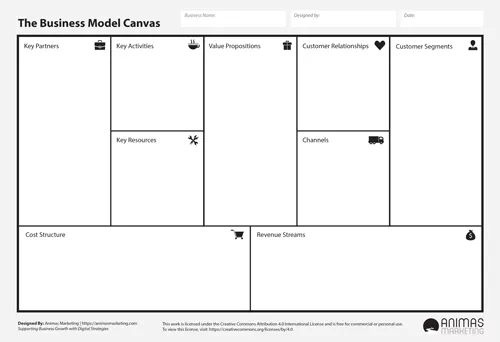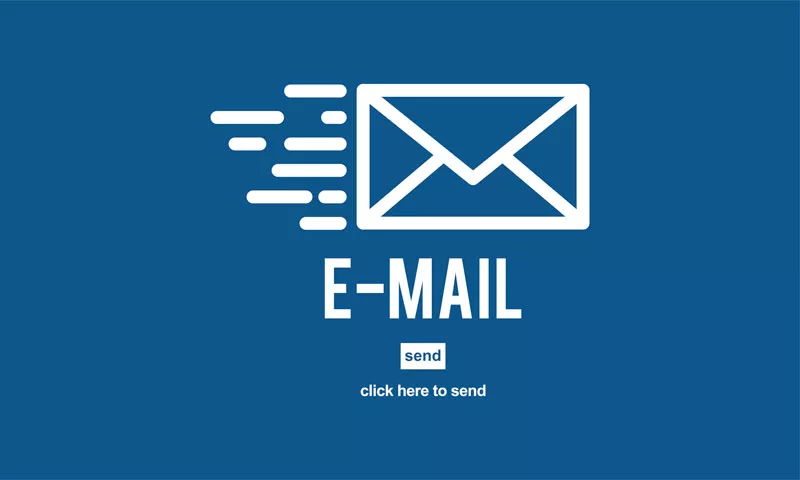If you’re reading this article, it means that you’ve just avoided making a big mistake: launching an email marketing campaign without knowing how and what to analyze to define its impact.
Any experienced digital marketer will tell you that marketing effort without measuring performance indicators is a waste of time because you have no way of knowing what kind of effect your campaign has.
If you don’t know how well your email campaign is performing, then you won’t know what techniques actually worked and what didn’t. In other words, your use of this tremendously important and effective marketing channel won’t be as effective as it can be.
And you could be losing big, since email is the digital marketing channel that generates the most ROI (return on investment) for businesses, according to the 2018 Email Marketing Industry Report.
Credit: 2018 Email Marketing Industry Report
On the other hand, using analytics will help you to:
- Understand how your leads and customers behave
- Identify techniques that have the most effect on them
- Determine the strongest features of your marketing offer that subscribers respond to best
- Achieve maximum return on investment.
If this sounds like something your business could benefit from, let’s see what you need to know to define if your email marketing strategy is actually working and bringing new leads.
The Most Important Email Marketing Metrics
Analysis of any email marketing campaign starts with checking its metrics. These are the characteristics that determine how recipients respond and interact with the emails they receive.
Even though they may sound like something you’ll have to spend hours to calculate, they are actually pretty simple but provide a valuable opportunity to adjust your campaign based on performance results. Besides, they’re not just interesting, but crucial to your success.
In fact, they are the best way to measure the effectiveness of email marketing, so we’re going to focus on the following metrics in this article:
- Open rate
- Click-through rate
- Unsubscribe rate
- ROI (Return on Investment).
1. Open Rate
This indicator refers to the number of your subscribers who clicked on your emails in their inboxes and read them. Obviously, knowing this is pretty important because if no one opens your messages, the campaign won’t do well.
Besides, it defines how effective your subject line is at persuading the subscribers to open your messages. Since 47 percent of people say that a subject line is the most important factor in getting them to open and read an email (source: SuperOffice), you should definitely measure the open rate to identify the lines that perform best.
Credit: SuperOffice
To calculate your campaign’s open rate, you need to use this simple formula:
Number of opened emails / number of delivered emails.
Tips to Increase Open Rate
Testing different subject lines is one of the best ways to make your emails more attractive to the recipients. Unfortunately, there’s no universal formula of the most effective subject line, but the aforementioned SuperOffice’s study has identified the following best practices that you should consider:
- Including a recipient’s name in a subject line can increase the open rate by up to 20 percent
- The best performing number of words in a subject line is between 6 and 10
- Most popular emails include the following words in their subject line: “awesome,” “e-sales,” and “secrets”
- Send your emails on the best open rate days. While the universal formula on the best sending times doesn’t exist, SuperOffice’s research found the following rates you can use to start your campaign:
Credit: SuperOffice
As you can see, powerful words, proper timing, and strategic greetings can increase the likelihood of recipients opening your emails. Because people receive tons of emails daily, finding ways to make your campaign different from the rest is essential to grab attention and spark curiosity. It’s an excellent way to entice people to open your messages, knowing that doing so is worth their time.
2. Click-Through Rate
One of the best ways to increase conversions of an email marketing campaign is analyzing recipients’ behavior to reduce friction. Behavior analysis can help detect the friction points hindering email recipients from converting. For instance, the email subject might not be captivating enough to catch the recipients’ attention. Therefore, it’s crucial to analyze behavior, and one of the best behavioral indicators of conversion is the click-through rate.
Let’s suppose that you’ve created a great subject line and convinced a recipient to open your email. The main task at this point is to get them to click on links that you’ve placed inside the message and lead them to a landing page/product page or another place you want them to visit.
Clearly, this indicator is very important for defining the success of your conversion effort, so you need to calculate it by using this formula:
Number of clicks / delivered emails x 100
Even though the click through rate varies across industries, a typical average value is between 2 and 5 percent.
Tips for Increasing Click-Through Rate
This critical indicator should be tracked on a weekly basis and it totally depends on how relevant and persuasive the content inside your emails is.
The best way to increase it is to send out highly relevant content, based on interests or purchasing behavior of your recipients,” recommends Kristin Savage, a content specialist from PickWriters.
The following email by Coursera is a simple example of relevant content because it provides the recipient with course options based on their preferences.
You can do the same: for example, send out personalized offers and products that the recipients might be interested in based on their browsing history on your website.
3. Unsubscribe Rate
Clearly, your email marketing campaign won’t generate any conversions unless people are interested in interacting with your messages, so you need to track the number of people leaving the list of your subscribers. This allows to discover possible reasons for resignations and eliminate them.
Calculating unsubscribe rate is easy:
Number of unsubscribers / number of delivered emails
Tips for Reducing Unsubscribe Rate
Unfortunately, there’s a number of factors impacting your unsubscribe rate, so you’ll have to track your campaign to find out a real reason:
- Uninteresting or irrelevant content
- Poor content formatting
- Irregularly timed campaigns
- Misleading subject lines
- Too frequent emails.
As you can see, having good quality content matters in retaining subscribers and sustaining future email marketing campaigns. If you can’t deliver on time, you’ll lose loyal subscribers and potential revenues.
To generate more leads and profits, take the time to curate emails, ensuring that all content elements adhere to high standards.
4. ROI (Return on Investment)
This is the overall return on your investment into a specific email marketing campaign. Simply explained, this is the total profits divided by the money you used to implement that campaign. to calculate it, use this formula:
Additional sales – campaign cost * 100
For example, let’s say the campaign contributed to an additional $500 in sales while costing you $100. This means that the return on the investment is 400 percent (500 – 100 *100).
Clearly, being able to calculate this indicator is critical to defining the success of the entire campaign.
How to Track these Metrics?
The effectiveness of your email marketing campaign can be measured by tracking relevant metrics using the right tools and techniques. With digital technology advancement, this task is now quick and easy to avoid committing the same email marketing mistakes.
There are two ways to track email marketing metrics described above. The first one is to use the formulas provided, you just need to do that regularly to ensure a consistent flow of information. The second one is to use email marketing software (read the reviews of the most popular software on Capterra to know more). It calculates most of these metrics automatically, thus allowing you to see the big picture.
Data is Your Friend
Undoubtedly, tracking these metrics will help you to get insights into your subscribers’ behavior and interests, so you’ll know how to craft offers they’ll find relevant. Whether you’ll decide to track them manually or use a software product, take some time to get familiar with the metrics and learn how to identify trends.
This will be incredibly helpful to you to achieve better conversions because once you learn how to recognize them and predict the outcomes, the effectiveness of your email marketing will increase dramatically.

Free Business Model Canvas

Free Business Model Canvas
Is Your Business Being Found Online?

Free Digital Marketing Report ($150 Value)
Want to know how your business stacks up against the competition?






0 Comments